
最常见的蛋白石颜色是什么?请阅读本指南了解详情!
 只需一眼,你就能发现任何一颗蛋白石都散发着缤纷的色彩。蛋白石以其独特的“变彩效应”而闻名,这种效应描述了色彩在宝石表面舞动变幻的奇妙景象。没有哪颗蛋白石只呈现一种颜色,那么最常见的蛋白石是什么颜色呢?要回答这个问题,我们需要观察宝石的体色(底色)。根据底色, 白色蛋白石是最常见的蛋白石颜色,其次是灰色蛋白石和绿色蛋白石。
只需一眼,你就能发现任何一颗蛋白石都散发着缤纷的色彩。蛋白石以其独特的“变彩效应”而闻名,这种效应描述了色彩在宝石表面舞动变幻的奇妙景象。没有哪颗蛋白石只呈现一种颜色,那么最常见的蛋白石是什么颜色呢?要回答这个问题,我们需要观察宝石的体色(底色)。根据底色, 白色蛋白石是最常见的蛋白石颜色,其次是灰色蛋白石和绿色蛋白石。
如果你听到“普通”就想到“平庸”,我们想请你再想想!在琳琅满目的蛋白石色彩中,蛋白石堪称伪装大师。然而,蛋白石本身却无法被隐藏;它闪烁的光芒和迷人的变彩效应,定能吸引所有人的目光!
说到眼睛,关于蛋白石的词源,一种说法是它源自希腊语中表示眼睛的词“ ophthalmos ”。另一种可能的来源是梵语“Uppal ”,意思是“珍贵的乳白色石头”。
十月出生的人或许会认出美丽的乳白色蛋白石,它是传统的十月生辰石。如果你出生在四月,也可以佩戴一些精美的蛋白石首饰,以此来纪念这古老而神秘的生辰石。
无论谁佩戴,蛋白石都是一种魅力四射的宝石。要充分了解最常见的蛋白石颜色,我们需要深入了解不同类型的蛋白石及其产地。
首先,我们来回顾一下基础知识。

什么是蛋白石?
蛋白石是一种矿物,由二氧化硅和不同量的水组成。与大多数宝石不同,蛋白石没有晶体结构或稳定的化学成分,因此是无定形的。
蛋白石属于一个独立的宝石家族——蛋白石家族。蛋白石宝石标志性的珍珠般光泽源于其内部结构,这种结构由紧密排列的球体组成,能够将光线分解成多种颜色。
那么,蛋白石是什么颜色的?
你或许会将蛋白石与色彩斑斓的虹彩联系起来,联想到肥皂泡上的彩虹。然而,虹彩是珍贵蛋白石所特有的。
珍贵蛋白石,又称高贵蛋白石,是一种具有变彩效应的蛋白石。换句话说,在光线下转动宝石,它就会呈现出多种颜色。这些颜色会随着观察角度的变化而变化。
珍贵蛋白石的颜色因石而异。有些珍贵蛋白石底色较深,例如黑色或宝蓝色。另一些则呈白色。有些珍贵蛋白石呈现出多种不同的颜色,以至于无法辨认其底色。
珍贵蛋白石经常与被称为“普通蛋白石”的品种混淆,我们接下来将更详细地探讨后者。
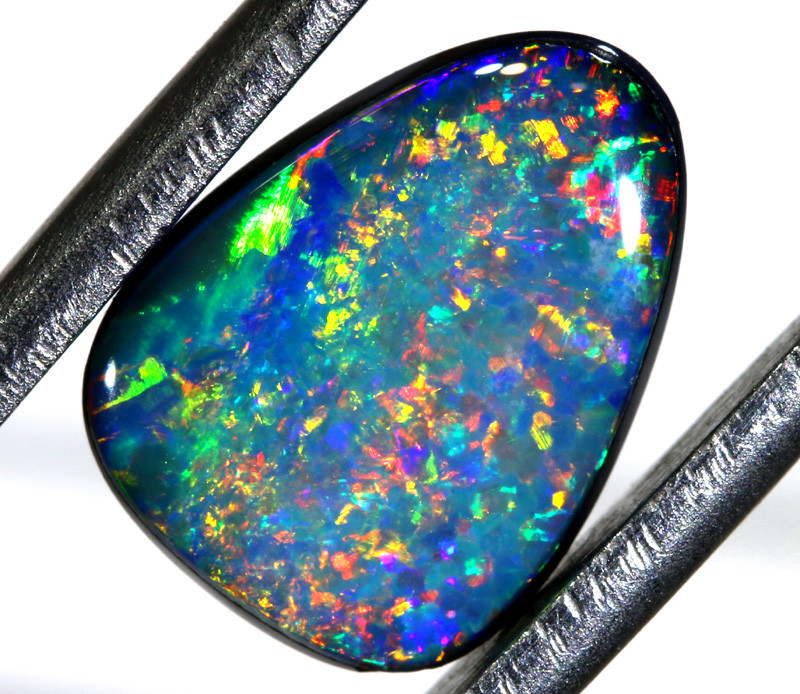
什么是普通蛋白石?
普通蛋白石,或称“杂蛋白石”,是世界上最常见的蛋白石品种。这种宝石颜色丰富多样,大多数蛋白石品种都属于“普通蛋白石”的范畴。如何鉴别普通蛋白石呢?如果宝石不呈现变彩效应,那么它就是普通的蛋白石。
普通蛋白石的另一个标志性特征是乳光效应。乳光效应是一种光学现象,它描述了普通蛋白石内部散发出的乳白色光泽。与使宝石表面反射光线的变彩效应不同,乳光效应看起来像是从宝石内部散发出的朦胧光芒。
普通蛋白石几乎可以呈现任何颜色,其柔和的色调深受许多人喜爱。大多数情况下,普通蛋白石的底色为白色或蓝色。
最稀有的蛋白石颜色是什么?最稀有的蛋白石标本具有红色或黑色的底色。
黑色底色非常适合展现蛋白石的另一个迷人特性:荧光。
你有没有掰断过荧光棒?掰断后看到的绿色光芒就是荧光造成的。蛋白石也能发出荧光,强度可能强也可能弱,甚至和荧光棒一样呈现绿色。蛋白石还可以发出黄绿色、浅蓝色、绿褐色或白色的荧光。
蛋白石发出荧光的原因很可能是宝石内部含有微量的铀。铀含量越高,荧光越强。内华达州产的一些荧光蛋白石的铀含量甚至高达0.12% (按重量计)!
我们知道蛋白石的荧光来自哪里,但它的颜色又来自哪里呢?

是什么因素导致了蛋白石的颜色?
普通蛋白石和珍贵蛋白石的形成环境基本相同:在气候干旱地区的岩石深处。矿工可能需要挖掘到地下60英尺(约18米)才能找到值得出售的蛋白石。为什么这么深?因为蛋白石的形成需要数百万年的时间。
首先,热水渗入地下。当热水向下流淌时,会带走硅质球体。最终,富含硅质的水沉淀在岩石的空隙中。随着水分蒸发,硅质球体紧密堆积,最终形成色彩斑斓的蛋白石。
蛋白石的颜色从何而来?这一切都要追溯到二氧化硅球体。
蛋白石中的二氧化硅球体,严格来说是二氧化硅晶体。当这些球体大小相近,并且排列整齐时,我们就能看到变彩效应。大自然真是神奇!每个球体的大小决定了该区域反射的光的颜色。
如果你一直关注这篇文章,你可能已经意识到只有珍贵的蛋白石才具有紧密排列的球形结构。如果是这样,给你点个赞!
普通蛋白石的二氧化硅球体排列杂乱,大小不一。因此,普通蛋白石无法像珍贵蛋白石那样反射完整的光谱。相反,普通蛋白石只能呈现有限的颜色范围,具体颜色取决于球体的大小和间距。
说到距离,去寻找蛋白石听起来怎么样?接下来,我们将详细介绍世界各地的蛋白石热点地区,以便您规划下一次的蛋白石探险之旅!
按产地划分的蛋白石颜色
虽然蛋白石可以在各种岩石和地点找到,但特定的环境会造就不同颜色的蛋白石。有些地方因其蛋白石品种而闻名。
南澳大利亚的库伯佩迪镇被称为“世界蛋白石之都”。澳大利亚的蛋白石闻名遐迩,蛋白石是该国的国宝!
澳大利亚
澳大利亚拥有世界上最丰富的蛋白石矿藏。事实上,世界上至少90%的蛋白石都产自澳大利亚!
澳大利亚每个产蛋白石的州都有其特有的蛋白石颜色。
在西澳大利亚的田野里,粉色蛋白石很常见。“粉色蛋白石”实际上是附着有蛋白石的木石的商业名称。然而,蛋白石木石的纹理图案可能呈现奶油色、黄色和红色等色调。
另一种蛋白石是砾石蛋白石。
产于昆士兰州的砾石蛋白石是蛋白石和铁矿石的混合物。每块砾石蛋白石的颜色和纹理都独一无二。一般来说,砾石蛋白石呈棕色,并点缀着闪亮的紫色、蓝色或绿色。
这种独特的黑色蛋白石色是新南威尔士州的特产。
黑欧泊极其罕见。少数有幸获得黑欧泊的人可能会沉醉于它迷人的光泽和色彩图案之中。
最后,南澳大利亚以出产浅色蛋白石而闻名。浅色蛋白石通常呈白色或乳白色,因此也被称为“白蛋白石”或“乳白蛋白石”。
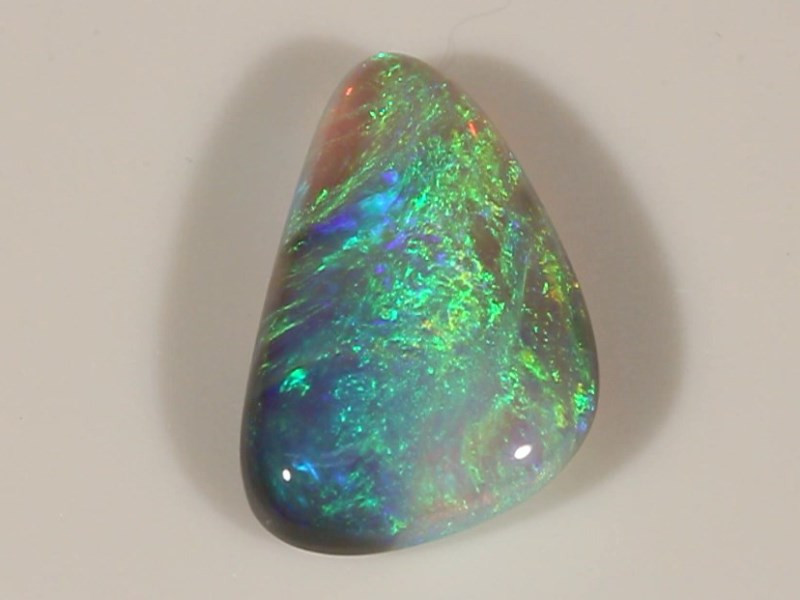 澳大利亚黑欧泊
澳大利亚黑欧泊
非洲
埃塞俄比亚和肯尼亚在蛋白石市场上引起了不小的轰动。
澳大利亚是蛋白石之王,但埃塞俄比亚一直在努力争夺这一桂冠。
埃塞俄比亚蛋白石主要为白色和乳白色珍贵蛋白石。近年来,备受追捧的黑色蛋白石也出现在埃塞俄比亚的矿藏中。
埃塞俄比亚的韦洛蛋白石是另一种令人惊艳的当地品种。韦洛蛋白石以沃洛省命名,是一种珍贵的火蛋白石,其主体颜色呈红色、橙色和黄色。韦洛蛋白石有时还会呈现出鲜艳的绿色或紫色闪光。
肯尼亚在蛋白石的历史上扮演着重要的角色,因为这里发现了迄今为止最古老的蛋白石。如今,普通蛋白石是肯尼亚产量最丰富的品种。它们是什么颜色的呢?肯尼亚的蛋白石颜色以美丽的橄榄绿色为主。
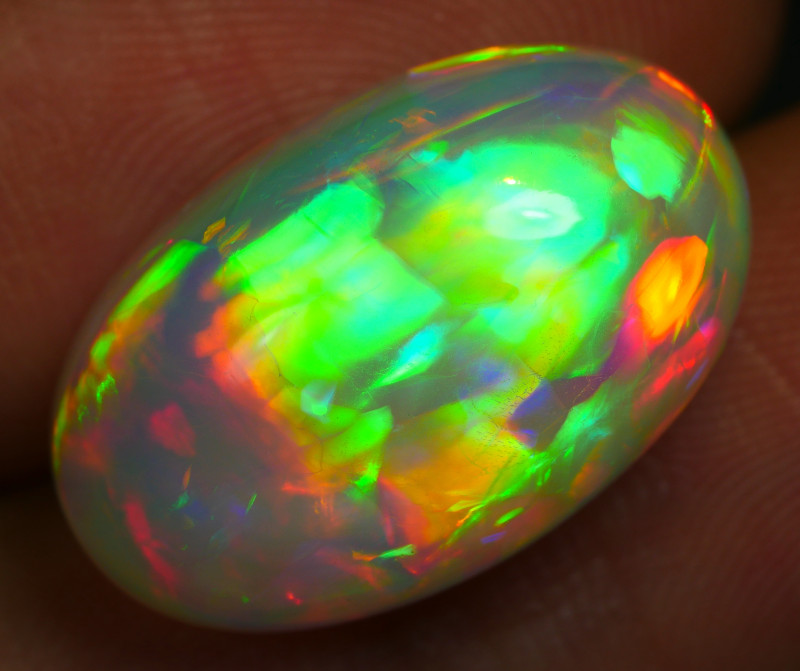 埃塞俄比亚韦洛蛋白石
埃塞俄比亚韦洛蛋白石
南美洲
在南美洲,秘鲁和巴西是该大陆主要的蛋白石供应国。
如果您喜欢柔和的粉彩色调,一定会爱上秘鲁的蛋白石系列。秘鲁蛋白石拥有丰富的柔和粉彩色调,尤其以粉色、蓝色和绿色最为常见。
巴西蛋白石以其卓越的耐久性和璀璨的光泽而独树一帜。巴西水晶蛋白石呈现出神秘柔和的变彩效果。由于其含水量低,这些宝石拥有更强的耐久性,因此珠宝商可以运用各种切割技法,充分展现蛋白石最美的色彩。
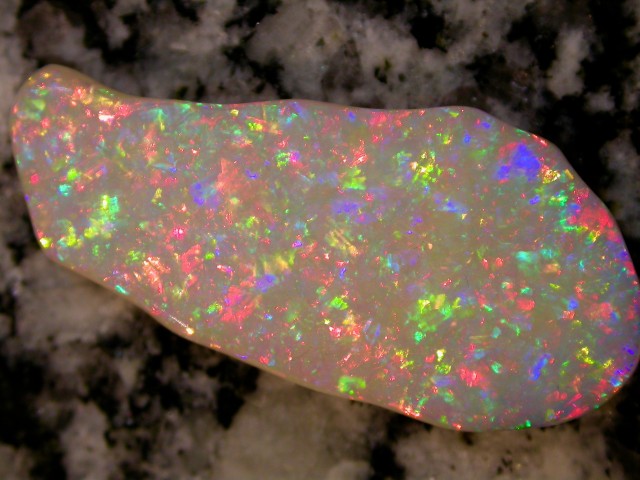 巴西蛋白石
巴西蛋白石
墨西哥
墨西哥以两种独特的蛋白石颜色而自豪:墨西哥火蛋白石和莫拉多蛋白石。
虽然许多蛋白石呈半透明或不透明状,但墨西哥蛋白石的颜色呈现出透明或半透明的表面。
墨西哥火欧泊的颜色,或许并不令人意外,与火焰的颜色相似。这种宝石可以是黄色、白色、橙色或红色。如同燃烧的火焰,品质上乘的标本呈现出饱和的红橙色。
莫拉多蛋白石是一种紫色蛋白石。莫拉多在西班牙语中意为“紫色”,因此得名。这类蛋白石通常不透明,带有乳白色淡紫色和紫罗兰色的图案。
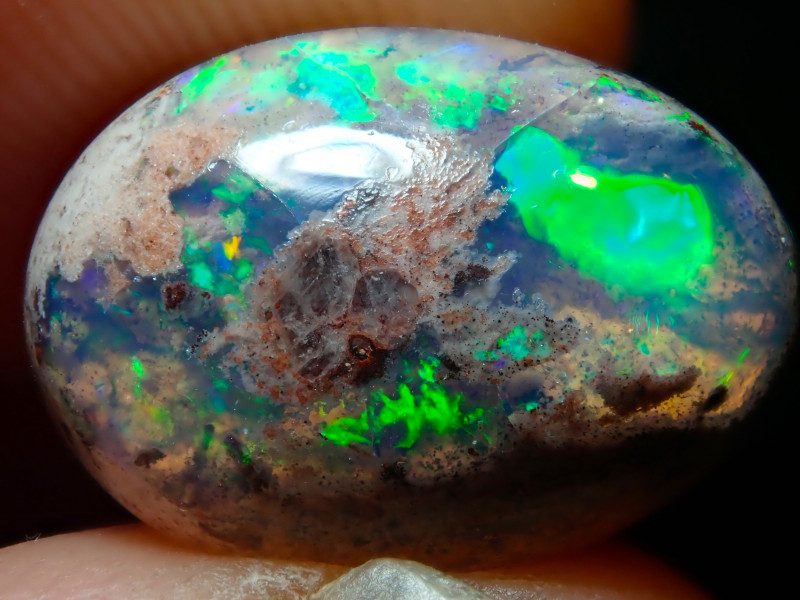 墨西哥火欧泊
墨西哥火欧泊
美国
美国蛋白石矿遍布全国各地,但俄勒冈州和内华达州是蛋白石生产较为著名的两个州。
俄勒冈州。俄勒冈州有两个重要的蛋白石矿:一个位于名为蛋白石山(Opal Butte)的地区,另一个位于莱克县。俄勒冈州的蛋白石主要由粉色、黄色和蓝色组成。
该州的火山灰降落为蛋白石木的形成创造了绝佳的环境。蛋白石木是一种硅化木,其内部含有蛋白石而非更常见的玉髓。
当火山灰形成保护性的森林层时,就会形成蛋白石化的木材。火山灰中溶解的二氧化硅会渗入地下,地下水可以收集这些二氧化硅,并开始通常的蛋白石形成过程。
内华达州。内华达州维尔京谷的居民声称,蛋白石在数百万年前就开始在那里形成。蛋白石化的化石或许能为这一理论提供一些佐证,但没有人能够确定蛋白石究竟何时在化石上形成。
无论如何,维尔京谷的蛋白石都以绚丽的色彩从潮湿的黏土层中涌现。内华达州的蛋白石包括黑蛋白石和珍贵黑蛋白石,这只是其中一部分。其他开采的蛋白石还包括白蛋白石和黄蛋白石,以及带有苔藓状或树枝状包裹体的蛋白石。
该地区铀含量高,使得许多蛋白石具有很强的荧光性。在紫外线灯(或黑光灯)照射下,这些蛋白石会发出明亮的电光绿光。
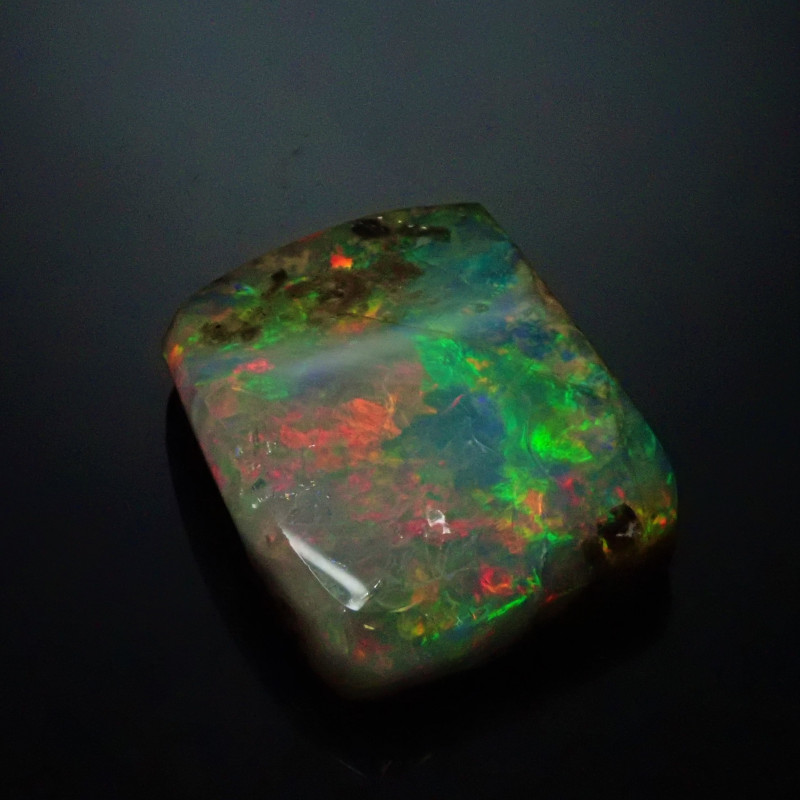 维珍谷美国蛋白石
维珍谷美国蛋白石
面对琳琅满目的蛋白石颜色,你可能会想:哪种蛋白石最值得购买?
颜色如何影响蛋白石的价值
确定蛋白石的价值并非易事。从产地到形状,当然还有其独特的颜色特性,诸多因素都会影响蛋白石的整体价值。
总的来说,最有价值的蛋白石是稀有品种,而最不值钱的蛋白石是最常见的品种。
那么,哪种颜色的蛋白石最有价值呢?
黑欧泊是欧泊中最稀有的品种,而珍贵的黑欧泊则更为罕见。然而,价值最高的普通欧泊颜色是稀有的红欧泊。橙欧泊、绿欧泊、蓝欧泊和紫欧泊的价值紧随其后。
如果您好奇的话,世界上最昂贵的蛋白石是“处女彩虹” (如下图所示)。“处女彩虹”于2003年被发现,价值超过100万美元。这件令人惊叹的标本目前在南澳大利亚博物馆展出。
 探索蛋白石彩虹!
探索蛋白石彩虹!
如果你已经准备好收拾行囊,计划一次蛋白石探险之旅,我们完全理解!蛋白石是一种独一无二的宝石,但每一颗蛋白石都是独一无二的!
掌握了这些知识,你就能给人留下深刻印象。为什么不把“你最喜欢的颜色是什么?”这个问题换成“你最喜欢的蛋白石颜色是什么?”
别担心,蛋白石的颜色有很多种!
你选好最喜欢的颜色了吗?找到最适合你的蛋白石颜色吧!
搜索Opal Encyclopedia
最新的文章
文章分类
All there is to know about Opals including Black Opals, Ethiopian Opals & Boulder Opal
14文章数
Check out our fascinating information and articles on all things amazing in the Opal world
41文章数




